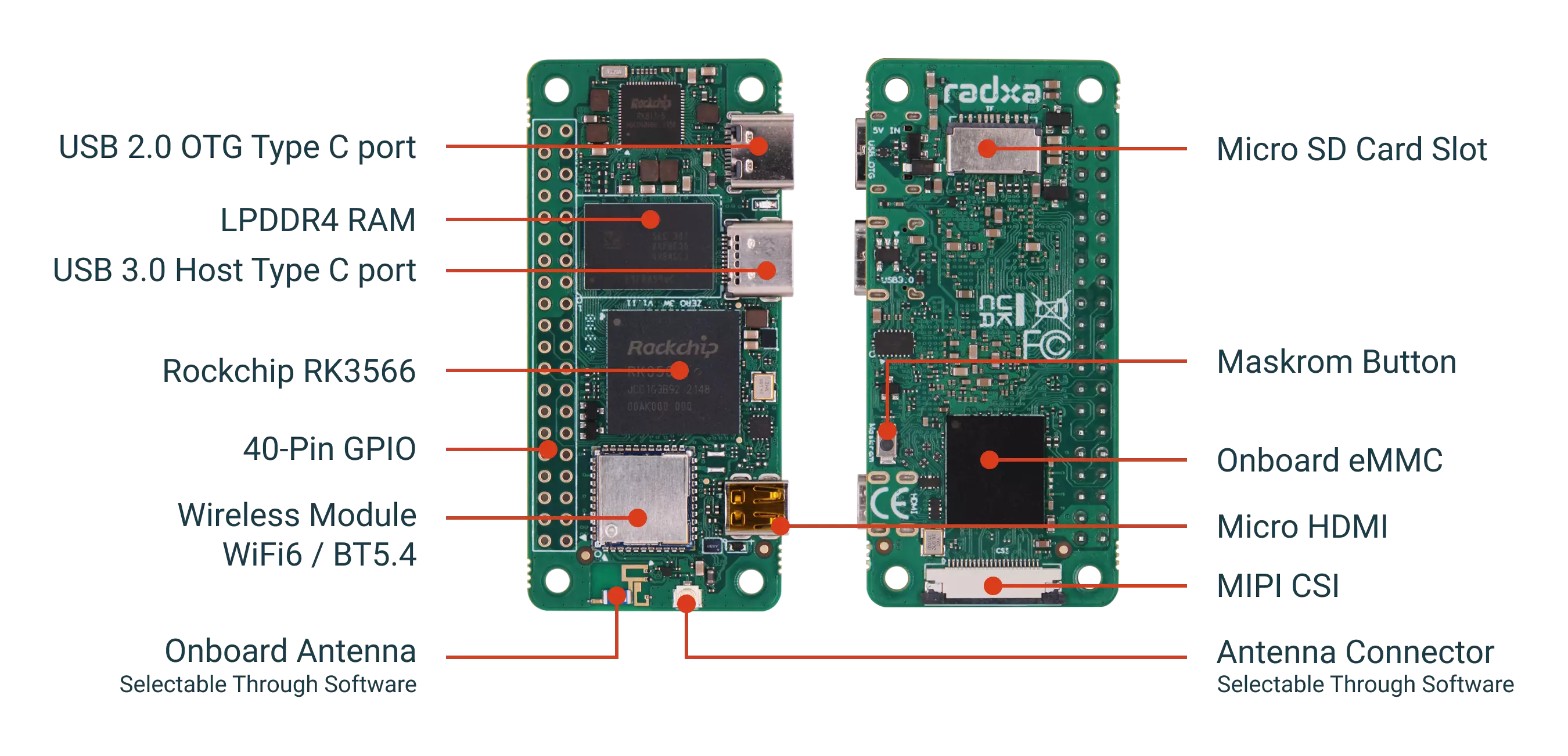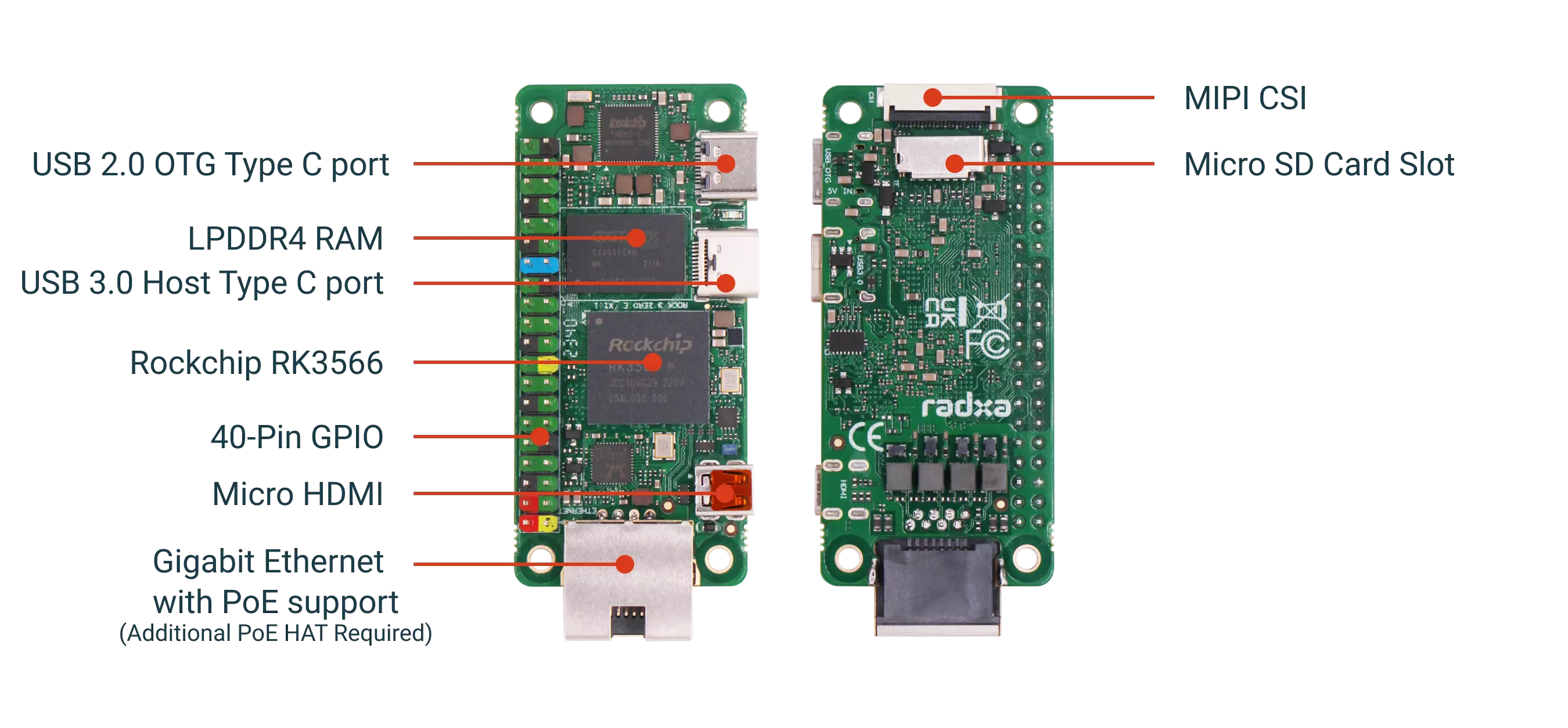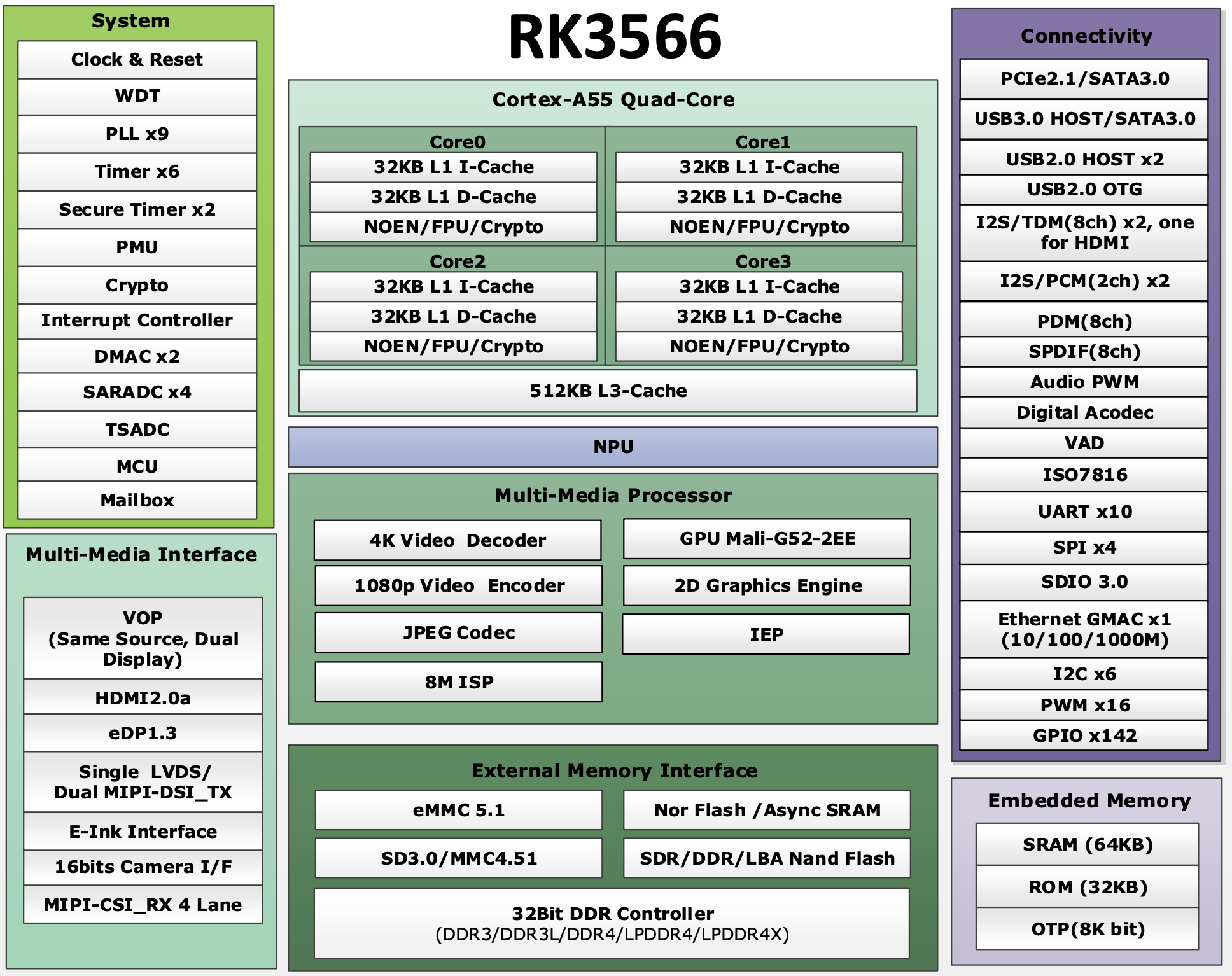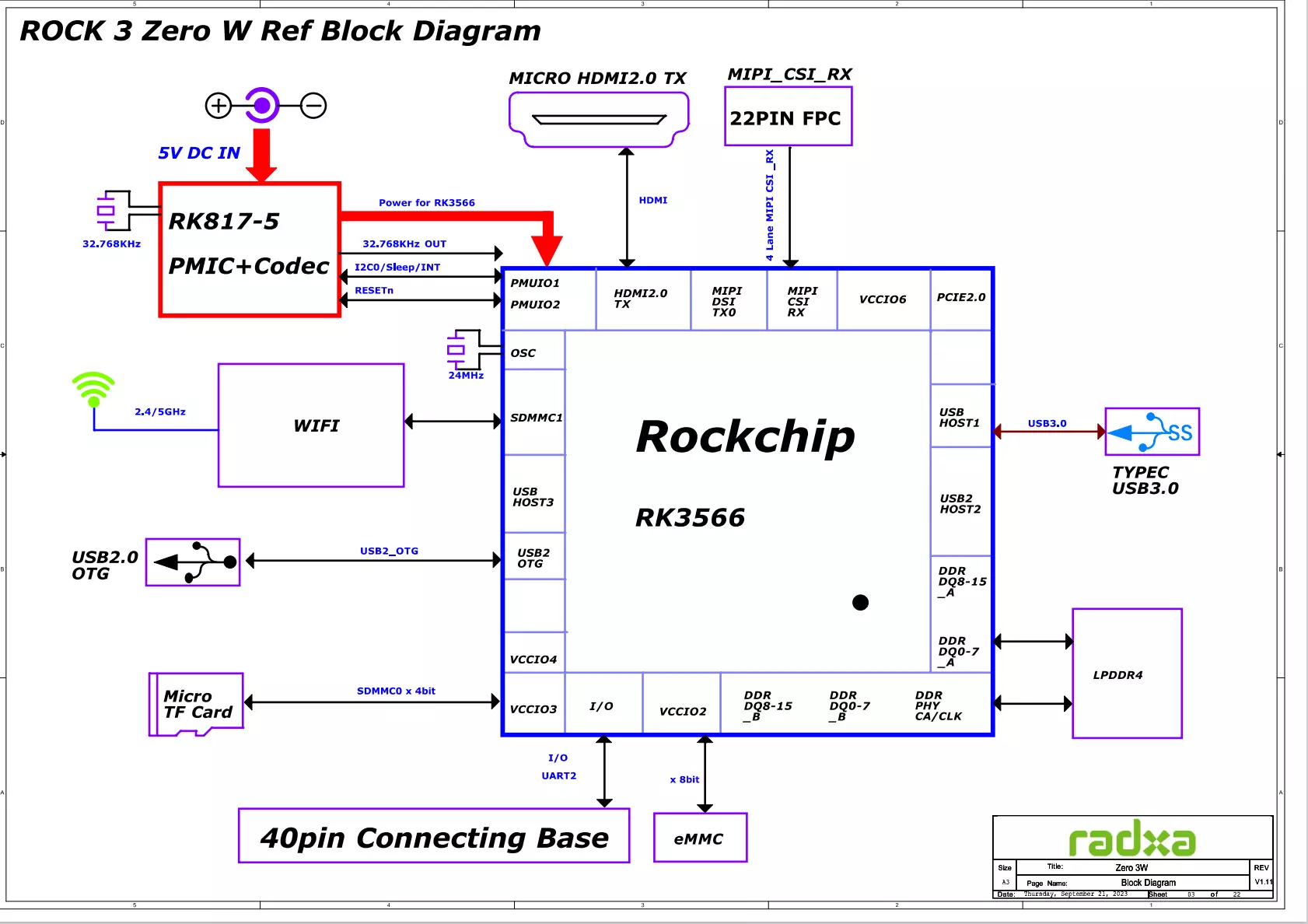ZERO 3
Product Description
- The Radxa ZERO 3W/3E is an ultra-small, high-performance single board computer based on the Rockchip RK3566, with a compact form factor and rich interfaces.
- Tailored for a diverse user base including manufacturers, IoT developers, hobbyists, and PC DIY enthusiasts, the Radxa ZERO 3W/3E is an ultra-small, versatile platform that can be used for a wide variety of applications, including IoT devices, machine learning edge computing, home automation, education, and entertainment.
- The ZERO 3W and ZERO 3E are basically the same size and model, but differ only in storage and network interfaces. For details, please refer to the Features section of this article.
Physical Photos
- ZERO 3W
- ZERO 3E
- Radxa ZERO 3W

-
Radxa ZERO 3E

Chip Block Diagram

Features
| Model | Radxa ZERO 3W | Radxa ZERO 3E |
| SoC | Rockchip RK3566 | |
| CPU | Quad-core Cortex-A55, up to 1.6GHz | |
| GPU | Arm Mali™‑G52‑2EE, Supports Arm Mali™‑G52‑2EE, OpenGL® ES1.1/2.0/3.2, Vulkan® 1.1, OpenCL™ 2.0 | |
| RAM | 1/2/4/8 GB LPDDR4 | |
| Storage | eMMC on Board:0/8/16/32/64 GB microSD Card | microSD Card |
| Display | Provide Micro HDMI Interface:Supports 1080p60 output | |
| Ethernet | / | Gigabit Ethernet, Supports POE PoE requires additional optional HAT |
| Wireless | Wi-Fi 6 (802.11 b/g/n) BT 5.0 with BLE | / |
| USB | USB 2.0 Type-C OTG x1 USB 3.0 Type-C HOST x1 | |
| Camera | 1x4 lane MIPI CSI | |
| Others | 40 Pin extends Header | |
| Power | Requires 5V/2A power adapter | |
| Size | 65mm x 30mm | |
System block diagram
- ZERO 3W
- ZERO 3E
- Radxa ZERO 3W

- Radxa ZERO 3E

Documentation guidelines
Except for the other systems directory below, the other contents are based on Radxa OS (Radxa's customized system based on Debian).
Getting started
By introducing system programming, system login, accessory usage, etc., let user can get started quickly.
Radxa OS
Radxa OS is an operating system customized by Radxa based on Debian OS. This chapter introduces system login, network connection, etc to let user to be familiar with the system quickly.
System Configuration
Introduces how to use tools like rsetup or command line to use devices or function.
Application Deployment
Introduces how to deploy the applications such as Samba, Docker, PVE, OMV, LAMP, Cheese, remote control panel, etc.
Application Development
Introduces upper-layer application development, such as QT, WiringX, Mraa, etc.
Hardware Development
Introduces hardware information, such as hardware interfaces, supported accessories, etc.
Lower level Development
Introduces uboot, kernel, debian os compilation and packaging, etc.
Other Systems
Introduces other systems than Radxa OS, such as Android
Accessories
Introduces supported accessory models and instructions for use.